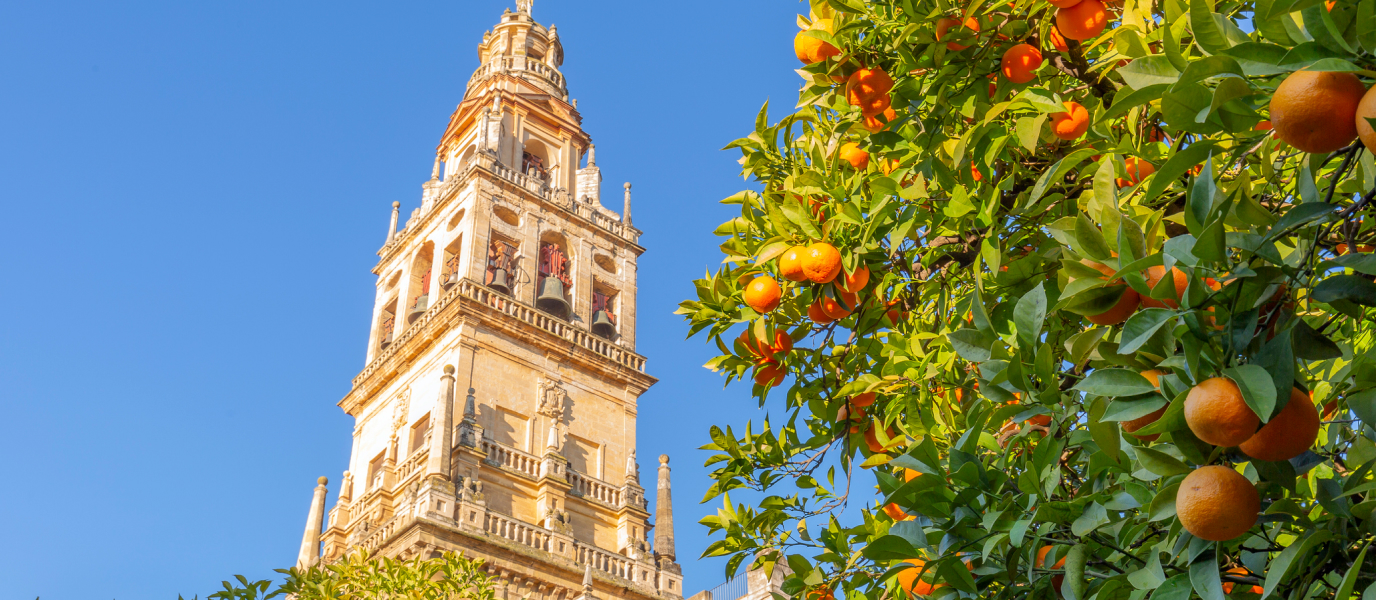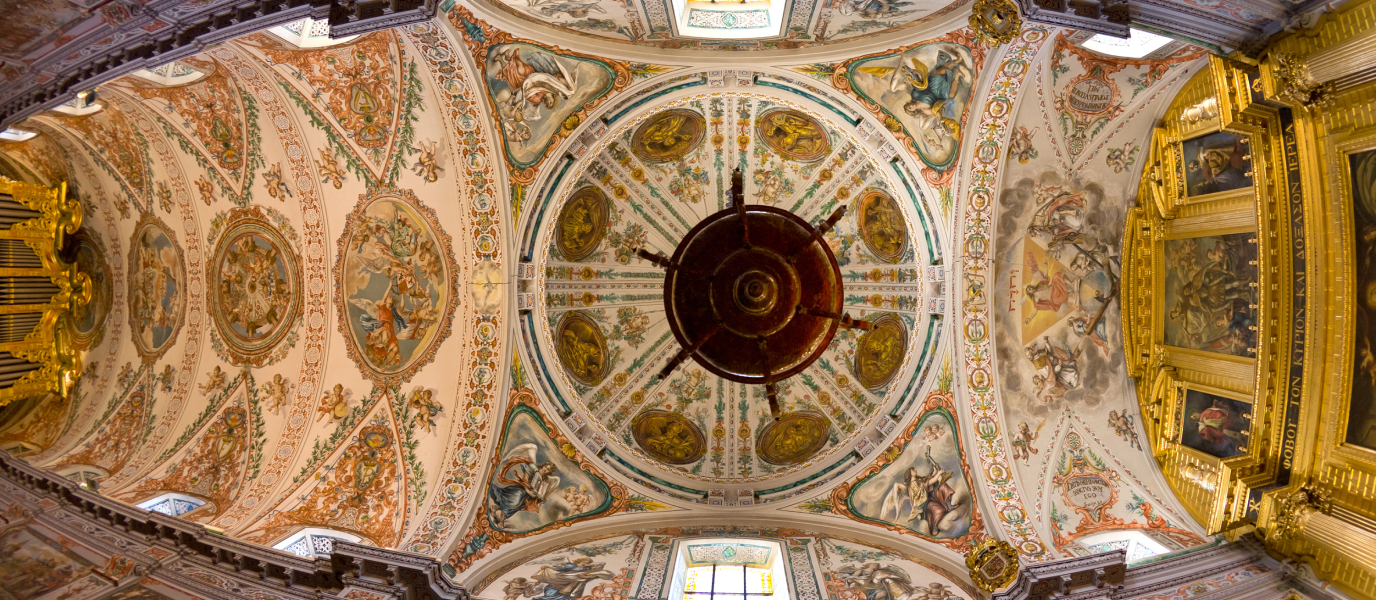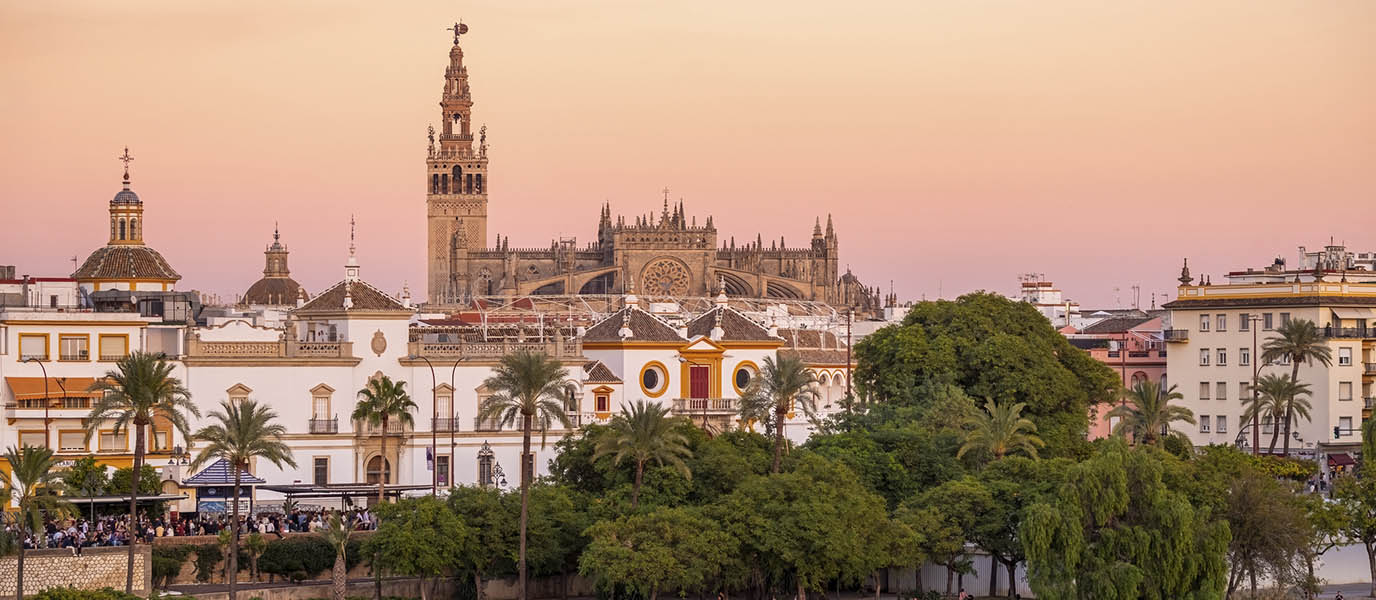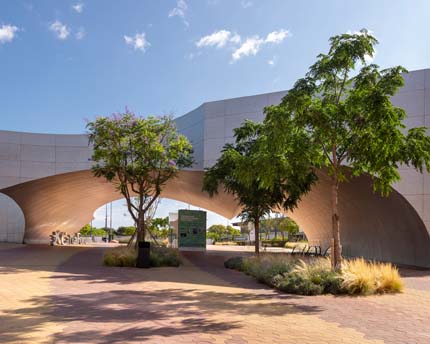Seville’s Giralda, a World Heritage Site since 1987, is made up of two radically different structures. It represents the city’s fusion of cultures and forms part of the Seville cathedral, Santa María de la Sede. With a height of 97.5 metres (not including the weathervane), it is taller than London’s Big Ben.
The Giralda is surrounded by Calle Placentines to the north, Plaza del Triunfo to the south, Plaza de la Virgen de los Reyes to the east and Patio de los Naranjos to the west.
It was commissioned in 1184 by Abu Yakub Yusuf—who had chosen Seville as the location of his court in the Iberian Peninsula—as the minaret for the thirteenth century Almohad mosque. Of the ancient mosque, only the Giralda and the Patio de los Naranjos courtyard remain standing. The Koutoubia mosque in Marrakesh served as a model.
The tower’s four sides are intricately decorated with sebka, an overlapping network of diamond-shaped multileaved arcs. The brick construction follows the tower within a tower concept since it consists of two structures connected by a series of ramps. The openings allow natural light to enter, and the interior houses seven chambers with stepped heights. The original structure was topped with four copper spheres that could be seen from several kilometres away. Unfortunately, these spheres were destroyed by an earthquake in 1356.
The Renaissance-style Giralda
According to legend, the Moors planned to destroy the Giralda before it fell into Christian hands in 1248. However, King Alfonso X announced that for every stone removed from the Giralda, a Moor would be decapitated, so the edification remained intact. It ultimately became the bell tower of the Christian cathedral whose construction began in 1402.
The tower’s belfry is the Christian section that was added in the sixteenth century by the architect Hernán Ruiz, who melded the Almohad tower with the Renaissance belfry on top, resulting in a unique creation. He mixed classicist elements, such as columns, pillars and domes, with moderately Mudejar-style shapes, such as brick reliefs and polychrome elements, to connect and combine the two styles.
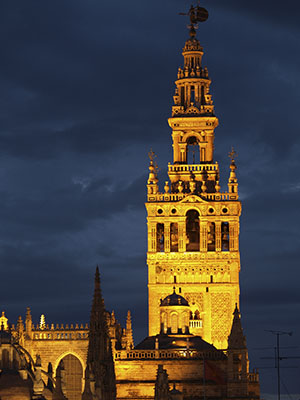
During this period, the current appearance of the Giralda was designed and the weather vane (giralda), which gives its name to the building, was added. This transformation also included four upper levels. The Renaissance belfry is made of white stone and brick, following a Palladian theme. It is topped with four jars of bronze lilies, one on each corner, that had been originally designed for lamps with small fires. The upper section is a three-level cupola with a quadrangular base that becomes circular, and an inscription that reads ‘TURRIS FORTISSIMA NOMEN DOMINI’ (‘The name of the Lord is a strong tower’). The tower is topped with Giraldillo, a bronze statue more than three-metres tall, holding a palm leaf and shield symbolising triumphant faith, whilst serving as a weathervane.
Visiting the top of Seville’s Giralda
The Giralda’s belfry and its balconies facing the four cardinal points are some of the best scenic overlooks in the city. As you make your way up the Giralda, you’ll be surprised that in lieu of stairs, 35 wide ramps were built so the sultan could reach the top on horseback to enjoy the views. With its 24 bells, this is the belfry with the most bells in Spain. When pealed, 18 of the bells are swung by ropes and the remaining 6 are chimed or struck by computer-operated hammers. Each bell is of a different size and has its own name. Weighing in at 5 tonnes and 2 metres tall, Santa María Mayor is the largest bell, whilst Santa Cecilia is the smallest at 138 kg and Santa Cruz is the oldest. The six newest bells were recast in 1998, when the belfry was restored. Thirteen of the bells are named after male saints and nine after female saints. The remaining two are named after Santa Cruz and All Saints. Admission to the cathedral also includes a pass to visit the Giralda.
Replicas of Seville’s Giralda
Giralda replicas can be found elsewhere in the world. Kansas City, Seville’s sister city, has its own Giralda, and so do Miami, San Juan (Puerto Rico) and Lovaina (Belgium). Additionally, Havana is home to the Castillo de la Real Fuerza (Castle of the Royal Force), a Giraldillo replica. Even Madison Square Garden had its own Giralda, but it was torn down in the 1920s.
Several “Giraldas” can be found throughout Spain, including in Badajoz, Arborc (Tarragona) and Carmona.




































































